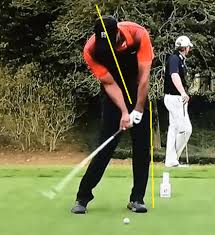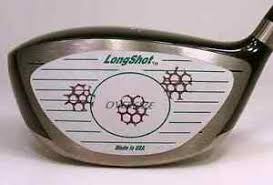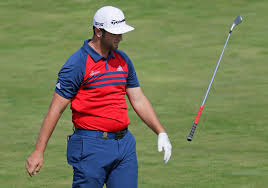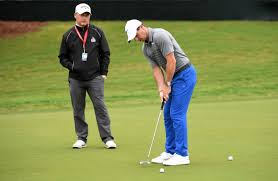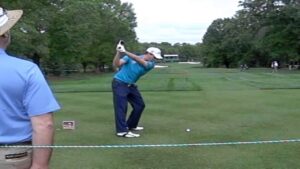I now realize that when we change to a slower swing speeds for any club, it tends to change our release rhythm. That results in poor directional control for our shots. By this I mean that our muscles fire at different rates during the swing and cause us to push or pull shots. The result can be a DISASTER!
Bryson DeChambeau may be on to something good with his uniquely designed identical iron shaft length for all of his irons. He sets up with the same athletic stance and tilt at his waist so that he can feel the same motion with every iron shot.
Consistent swing speeds are critical for consistent muscle firing. This is why we need to setup squarely along the target line for our maximum swing speed with our DRIVER and possibly with a more open stance for slower controlled swings with our IRONS and especially with our WEDGES. If you know that you have too much club for the distance of your shot, choke down on the club and take a practice swing to feel the different depth of your swing at your NORMAL SWING SPEED. (NOT FASTER AND NOT SLOWER).
Clay Ballard who creates the TopSpeedGolf blog is a real promoter to generate longer drives with faster Swing speeds. [It’s a fact that an extra 1 MPH impact speed increases your driver distance by about 2.5 yards.] In the past I have provided blogs from others who promote “controlled” swing speed or “limited” back swing for recreational golfers to land more drives in the fairway and to hit more Greens in Regulation. Now I personally find that inconsistent swing speeds result in inconsistent direction control.

Muscle Memory
Clay is now promoting a cutting-edge technology called Neural Adaptation Practice. I Googled this process and found the following: ‘Muscle memory‘ also known as neuromuscular facilitation, is the process by which muscles become familiar with certain motor skills. Furthermore, when signals from the brain are sent to the muscle, a pathway becomes established and this process becomes semi-automatic.”
That may be a bunch of gobbledegook but we do know that a consistent backswing rotation with your hips, shoulders and arms/wrists and the same sequenced downswing will produce consistent and powerful results. (start your downswing with your hips) Unfortunately when we change our club for the next shot we need to change our swing pattern.
Driver Swing: LAUNCH your teed-up ball, UP from the inside to outside for longer draws. Let your leading foot heel lift if needed to help you get a 90 degree shoulder rotation in your backswing.
Wood/Hybrid Swing: POWER up your target line and let the loft of your club lift your ball. You are swinging level with the ground when you impact the ball.
Iron/Wedge Swing: SCOOP down to impact your ball before you skim any turf. Weight shift forward during your transition is critical to allow you to bottom out your arc just after the point of impact.
Use your practice swing to make sure that you are swing with a LAUNCH, POWER OR SCOOP SWING with the right type of club. (You are NOT trying to launch your iron shot on a par 3 tee shot.) If you don’t plan it and practice it, you WILL make the wrong swing with the wrong club. Practice with GOLFSTR+ with every club in your bag for the right swing. Buy one today at www.GOLFSTR.com
Golf Truism #22: The less skilled the player, the more likely he is to share his ideas about the golf swing.




